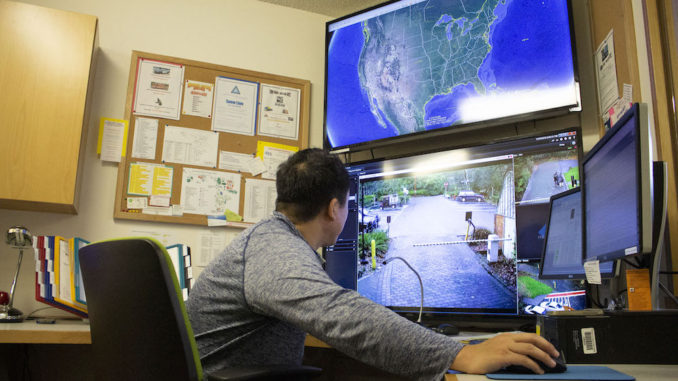
The Pacific Northwest is expected to be hit by a 8.0-9.2 magnitude earthquake. Whether the tectonic plates off the Oregon Coast will subduct today or 100 years from now cannot be predicted, but Lewis & Clark is currently unprepared for what geologists are referring to as “the really big one.” In order to improve, LC hired its first ever emergency manager, Lee Shin, in the beginning of November. Shin is conducting a 60 day analysis of the current state of LC to determine gaps and shortfalls in emergency planning. Based on these findings and input from stakeholders and students in the LC community, Shin will form an emergency management steering committee and begin writing a comprehensive Emergency Operations Plan.
Shin has spoken with Student Life, the Dean of Students, Graduate School, Law School, and Office of Institutional Research to focus on how those with hearing, visual and mobility issues can be helped in the event of a large scale catastrophic event. He has also identified the need for pet evacuation and shelter plans. In terms of food and water, there is an emergency cache on campus, but it would run out after 48 hours.
In order to provide students with helpful information on how to prepare for an emergency, Shin is planning to organize a mandatory information session during New Student Orientation and more robust trainings for Resident Advisors and Area Directors.
LC, and Portland in general, is preparing for a megathrust earthquake on the Cascadia subduction zone. According to Associate Professor of Geological Science Elizabeth Safran, the question is not whether the earthquake will happen, because it most certainly will. The question is how prepared are we for the earthquake when it does happen. There is no way to predict when it will come; it could be today, it could be 100 years from now.
Portland is not in danger of a tsunami and the majority of buildings will not collapse, however auxiliary factors could cause damages that are far worse than those caused by the shaking itself.
Liquefaction, which is what happens when saturated sediments get shaken and they flow, kind of like when you wiggle your feet in sand where waves come in and they sink, could cause major damages along the Willamette and Columbia rivers. This would be made much worse during the rainy season, and the PDX airport, bridges and an industrial area in the Northwest which stores about 90 percent of the city’s fuel are at high risk.
The Burnside bridge and road have been identified as an “east-west lifeline” to allow transport across the Willamette river after an earthquake. This is due to the fact that it does not have very many things over it to collapse on top of it unlike the 405 and I-5 which have dozens of overpasses.
“The Burnside Bridge is not currently up to seismic standards, but it’s been identified as a target for retrofitting and now they’re considering various designs and which ones would be most effective,” Safran said.
In the event of an earthquake, Portland residents would likely be without essential resources for at least two weeks, which is why Shin and Safran suggest that every person have a two-week kit with food, water, clothes, first aid and a sleeping bag in their car or somewhere easily accessible.
Shin and Safran both expressed how difficult it is to motivate college students to adequately prepare for an earthquake. Given the unpredictability of earthquakes, people tend to prioritize other things. Environmental Studies major Samuel Bundenthal ’19 is conducting a project for his ENVS 295 Environmental Engagement class which aims to address the apathy surrounding earthquakes.
“I am going to conduct a survey and gather a focus group of LC students to try to assess and dialogue about attitudes and fears and anxieties about the earthquake,” Bundenthal said. “It’s my sense that this being such a big problem and not knowing when it’s going to happen, it’s very easy to push that away and not deal with it … My hope is that I can give my information and my findings to Sharon Sexton who is our athletics director who’s in charge of coordinating physical education classes on campus. I would really really love to see a community emergency response training class that is offered for credit on campus.”
Even if an earthquake does not occur during their time at LC, staff, faculty and students alike are working to equip members of the LC community with the knowledge and skills to be prepared for an earthquake even after they leave the college.
Subscribe to the Mossy Log Newsletter
Stay up to date with the goings-on at Lewis & Clark! Get the top stories or your favorite section delivered to your inbox whenever we release a new issue.

Leave a Reply